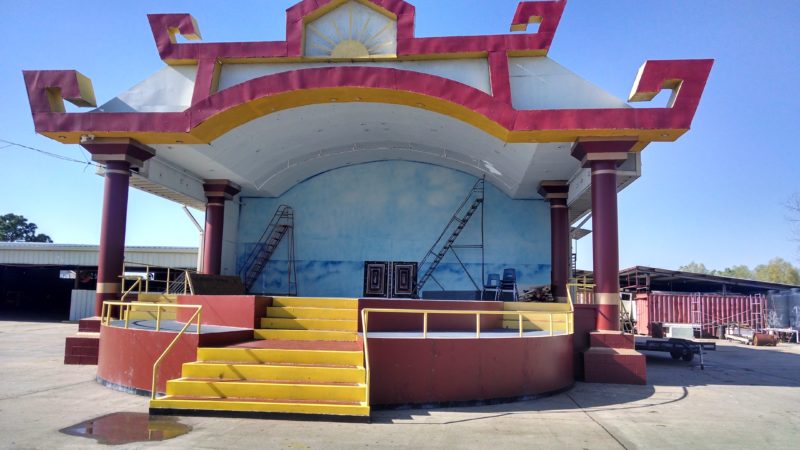
A relic case within the church. Photo by Matthew Wuertz.
The Mary Queen of Vietnam (M.Q.V.) Church is a Roman Catholic congregation, located at 5069 Willowbrook Drive in New Orleans, Louisiana. It currently serves 5,000 members, including over 1,100 families from the surrounding area. It is located in a part of New Orleans simply called New Orleans East. The surrounding area is more rural than New Orleans West, which is home to most of New Orleans urban areas. The church holds both English and Vietnamese masses.
Collection of Relics
Mary Queen of Vietnam is run by the Archdiocese of New Orleans, and was chosen to be home to the second largest collection of relics of Vietnamese saints. In 1988, Pope Jean Paul the II recognized 118 Vietnamese martyrs from the 16th and 17th centuries (Buttinger, Joseph. The smaller dragon; a political history of Vietnam.. New York: Praeger, 1958. Print., 1). During that time, Vietnam was isolated like most other Asian countries. However, missionaries traveled to Vietnam with the purpose of ‘civilizing’ them. Soon the missionaries started to become more and more successful, converting many to Catholicism. However, once the emperor of Vietnam heard of this, he decreed that all Catholics should be tortured and killed. There were no records of the event, so the relics are the only known proof that the massacre occurred, says a representative of Orleans Parish (http://www.catholic.org/saints/saint.php?saint_id=4951, 2).
Hurricane Katrina
During hurricane Katrina M.Q.V. Church housed a number of refugees, and was pivotal in the rebuilding of the surrounding community. After the initial problems that Katrina brought, the M.Q.V. church was very politically active. City ordinances had started a process that was turning the surrounding area into a multitude of dumpsites because of the massive amounts of debris that Hurricane Katrina caused. These sites were proven to be spilling over into the nearby river that runs through New Orleans east. In combination with volunteers from surrounding organizations such as VAYLA, a protest in front of the dump brought media attention, and started a campaign to close the dumps. While the protests did close the city’s dumps, illegal dumping still occurs in the area.

The church’s stage. Photo by Matthew Wuertz.
Father Vein is credited with the organization of the community, and what is regarded as an incredible recovery. While areas with similar flooding during Katrina have not recovered in nine years, New Orleans East was rebuilt within two years. Of the 75 businesses in the area about 70 of them returned. Of those businesses, only around three of them were not owned by Catholics. The community surrounding the church is a devout one, and the people view New Orleans East as a “second homeland” (Chamlee-Wright, Emily, and Virgil Henry Storr. “Social Capital As Collective Narratives And Post-Disaster Community Recovery.” Sociological Review 59.2 (2011): 266-282. SocINDEX with Full Text. Web. 11 May 2014., 3).
Father Vein assured that the area would get better, and that the community would bounce back. His reassurance is what caused many who were thinking about leaving to reconsider. Most of the issues that surrounded post-Katrina New Orleans centered around a lack of collective action. Vein’s success as a leader is attributed to the well-structured administration of the church that had hierarchical authority already set in place.
Community Involvement
The Church is also home to a number of Vietnamese-based festivals. Tet is the Vietnamese new year, and every year the church hosts a large festival where over 30,000 people are estimated to attend. Mary Queen of Vietnam Community Development Corporation has been assisting the New Orleans East community in government involvement and interaction. Recently, they assisted residence with enrolling in the Affordable Care Act. Since October of 2013, M.Q.V provides services mainly to non-English fluent Vietnamese community members in New Orleans East and has been steady with enrollment”(http://www.mqvncdc.org/, 4).






